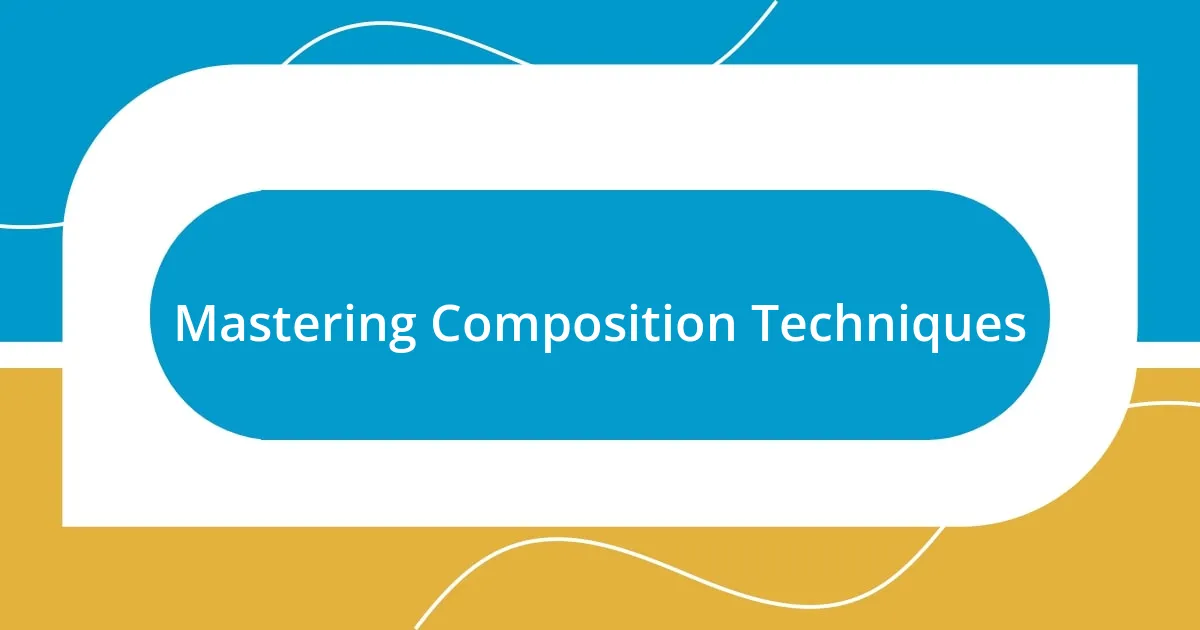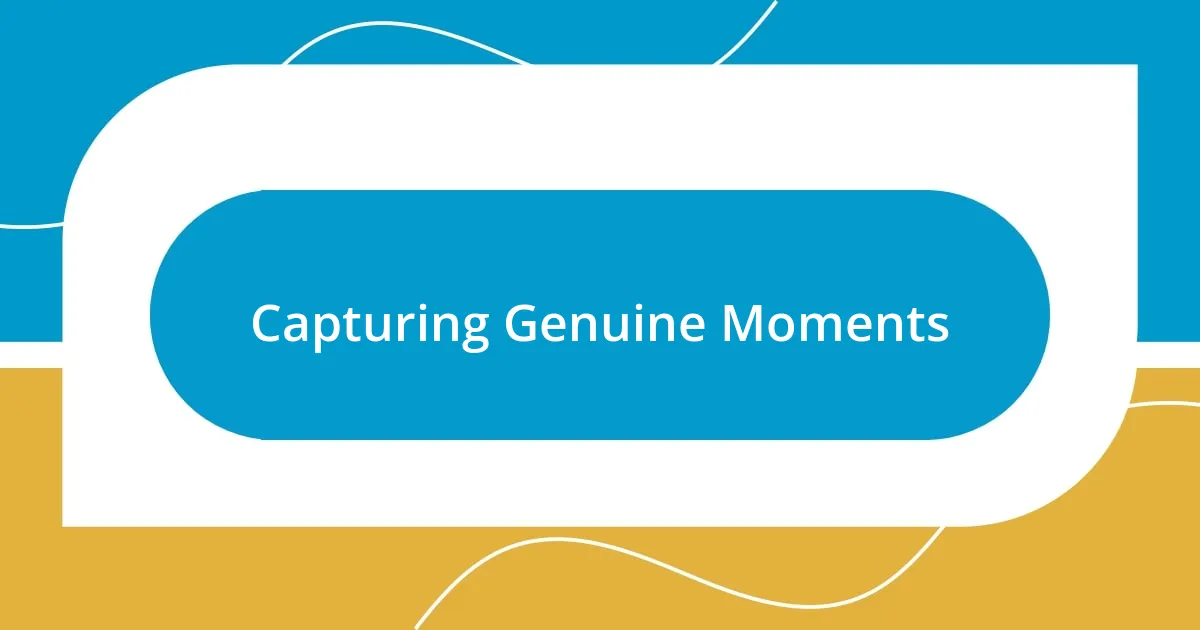Key takeaways:
- Capturing emotions in photography requires a deep connection between the photographer and the subject, as seen in candid moments that transcend mere visuals.
- Effective composition techniques, like the rule of thirds and leading lines, enhance emotional impact in photographs, making viewers feel more connected to the scene.
- Utilizing light and shadows can transform images by conveying deeper narratives and evoking nostalgia or joy, as demonstrated in various personal anecdotes.
- Post-processing is vital for emphasizing emotional nuances in photographs, allowing subtle adjustments to shift the overall mood and enhance storytelling.

Understanding Emotion in Photography
Photographing emotion requires an understanding of the subtle nuances that convey feelings. For instance, I once captured a candid moment of my grandmother laughing. The warmth in that image is not just her smile; it’s the twinkle in her eyes that tells a thousand stories, connecting me to her joy and spirit. Isn’t it fascinating how a single frame can encapsulate such a profound feeling?
When I look back at my photos, I often wonder what emotions lie beneath the surface. A fleeting glance or a slight tilt of the head can speak volumes about a person’s inner world. Have you ever noticed how light can dramatically change the mood of a photograph? I find that early morning light has a way of softening harsh realities, evoking a sense of hope and tranquility that I strive to encapsulate in my work.
Capturing genuine emotion often hinges on the relationship between the photographer and the subject. During a street photography session, I found myself chatting with a man who had just lost his wife. His vulnerability was palpable; as he shared his memories, I raised my camera, apprehensive yet hopeful. The resulting image was a reflection of his grief—a deep, poignant moment frozen in time. How do such connections influence your own photography? I believe they can transform a simple picture into a heartfelt story.

Choosing the Right Subjects
Choosing subjects that evoke genuine emotions requires a keen eye and intuition. One of my most memorable experiences was capturing a child’s first reaction to snow. Their wide-eyed wonder and pure delight told a story far beyond mere snapshots. Observing the subject’s natural reactions and movements always guides me to the essence of the moment.
I’ve also learned to value the connections between people. While photographing a couple celebrating their anniversary, I focused on their shared glances and subtle smiles. Those quiet moments of intimacy often hold more emotional weight than posed portraits. It makes me wonder—how often do we overlook the simple beauty of those unguarded interactions?
When choosing a subject, consider the context and environment. During a community event, I spotted an elderly man watching a dance performance, his eyes sparkling with nostalgia. That instant reminded me that the right subject in the right setting can amplify emotions. It’s all about finding that harmony to create a compelling visual narrative.
| Factors | Examples |
|---|---|
| Emotional Depth | Candid moments, such as children playing |
| Connections | Intimate interactions between couples |
| Context | Environmental settings that evoke nostalgia |

Mastering Composition Techniques
Mastering composition techniques is vital for capturing the emotions that lie within a scene. One experience that stands out to me is photographing a street musician during sunset. The way I positioned him within the frame provided context. By balancing the vibrant sky against his shadowy figure, I was able to convey a sense of longing and hope. The composition drew viewers in, inviting them to feel the music’s rhythm through the image.
Here are a few key composition techniques that I find particularly effective:
- Rule of Thirds: Dividing the frame into thirds allows for more dynamic and interesting compositions, creating points of interest that lead the viewer’s eye.
- Leading Lines: Utilizing natural lines in the environment guides the viewer’s gaze to the subject, heightening emotional impact.
- Framing: Using elements like doorways or branches to frame your subject can draw attention and add depth to your photograph.
Through these techniques, I’ve learned that the way I structure an image not only enhances its visual appeal but can also amplify the emotions I wish to express.

Utilizing Light and Shadows
Utilizing light and shadows effectively transforms a photograph into a vivid emotional experience. I recall a moment photographing my daughter playing in the late afternoon light. The way the golden sun illuminated her laughter, while her shadow danced playfully on the ground, created a beautiful contrast that captured sheer joy. In that instant, I realized how shadows can represent both presence and absence, heightening the emotion of the scene.
When I think about shadows, I realize they carry depth and narrative. During a recent trip to an old city, I shot a narrow street with the sun casting long shadows from ancient buildings. This interplay of light and darkness made the scene feel timeless, evoking nostalgia. It’s fascinating to consider how such elements can prompt viewers to reflect on their own experiences. Have you ever looked at an image and felt a wave of memories wash over you just from the play of light?
I often experiment with different times of day to see how light impacts my images. Sunset is a favorite, as the warm hues wrap around my subjects, making emotions more palpable. I remember capturing a couple during that magical hour—their silhouettes against the embers of the sky told a love story, powerful and intimate. Light, combined with shadows, serves as a brush, painting emotions that words sometimes fail to express.

Capturing Genuine Moments
Capturing genuine moments requires an instinctive response to the world around you. I remember a rainy day when I stumbled upon a small café, and a couple was sharing a laugh over steaming cups. The way they leaned in toward each other, completely oblivious to the downpour outside, struck me deeply. It was as if that intimate moment existed in a bubble, untouched by the chaos of the world. I quickly snapped a photo, realizing that true emotions often shine brightest during life’s unscripted moments.
I’ve also found that anticipation plays a huge role in capturing authentic scenes. One evening at a family gathering, I noticed my grandmother as she watched her grandchildren play. The love in her eyes spoke volumes, each twinkle reflecting years of memories and joy. I waited patiently until she let out a soft chuckle, and I pressed the shutter just as that warmth spread across her face. Capturing these candid instances teaches me that life unfolds in a series of fleeting seconds, and it’s my job to preserve them through my lens.
I often wonder, how many incredible moments are lost simply because we weren’t tuned in? I was once at a park, where children were flying kites. As I snapped pictures, a sudden gust lifted one child’s kite high into the air. The sheer exhilaration on his face was infectious. It became a reminder to me: genuine moments often happen when we least expect them. Being present creates the space for emotions to reveal themselves, and that’s when the magic truly happens.

Post-Processing for Emotional Impact
Post-processing can significantly enhance the emotional resonance of a photograph. For instance, I recall editing a portrait of my elderly neighbor. By bringing out the texture in her skin and softening the background, I highlighted the fine lines that told her story. Each wrinkle was a testament to the laughter and tears she’d experienced, transforming the ordinary image into something deeply moving.
While adjusting contrast and saturation, I find that even subtle shifts can evoke different feelings. When I revisited an image of a foggy morning at the beach, I decided to enhance the cool tones. The result was a melancholic scene, where the mist enveloped the shore, evoking a sense of solitude that I hadn’t fully captured in-camera. Have you ever altered an image and been surprised how it shifts the mood completely? That’s the beauty of post-processing; it allows us to add layers of emotion that can sometimes be absent in the original shot.
Sometimes, I experiment with presets that mimic classic film styles. I remember applying a vintage filter to a candid photo of my friends laughing at a dinner table, and suddenly, the image felt nostalgic, transporting me back to that moment, like it was a cherished memory from the past. It’s incredible how post-processing can guide the viewer’s emotions, prompting them to connect with the image on a more personal level.

Sharing Your Emotional Stories
Sharing emotional stories through photography allows us to connect with others on a deeper level. I remember attending a friend’s art exhibition where each photograph was paired with a brief story written by the subject. One image captured a mother’s tearful farewell as she waved goodbye to her son heading off to college. The combination of image and narrative forged a bond with the audience, making us reflect on our own goodbyes. Isn’t it fascinating how a single moment can evoke such a wide range of emotions?
When I look back at my travels, I find that the most powerful stories often arise from unexpected encounters. I once met a street performer in a bustling city. As he played his guitar, lost in the music, I felt a striking sense of joy paired with a hint of melancholy. Sharing the photograph with a caption about the fleeting nature of shared moments helped others feel the bittersweet beauty I experienced that day. It’s as if the image transcended time, reminding me that stories linger long after the moment fades.
I believe emotions resonate differently with each viewer, and that subjectivity is what makes storytelling through photography exhilarating. Have you ever shared an image with a friend, only to hear them interpret it in a way you never considered? I cherish those moments because they remind me that every photograph has layers waiting to be uncovered, each rooted in the emotions we all carry. This exchange enriches the narrative, inviting others to join in my experience and create their own.














